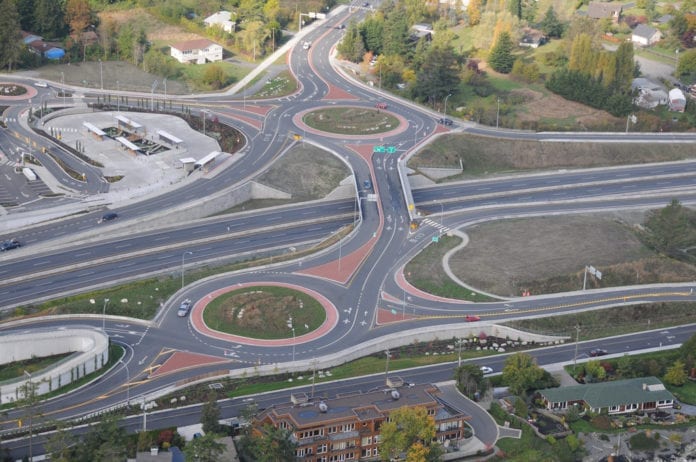While most BC drivers struggle navigating roundabouts, they reduce injury crashes by up significantly as they reduce speed and eliminate head-on, right-angle and left-turn crashes.
According to the provincial insurance company, modern roundabouts can significantly decrease injury crashes by up to 75%.
Moreover, they can enhance safety for pedestrians and cyclists.
A recent ICBC survey conducted by Ipsos unveils that just over half of drivers (57%) feel confident navigating a single-lane roundabout, while only 29% feel confident navigating a multi-lane roundabout.
The survey also highlights that 15% of respondents find it challenging to determine who has the right of way when entering a roundabout.
This aligns with drivers’ primary frustration when navigating roundabouts: encountering other drivers who fail to yield to vehicles with the right of way.
“Road design is critical to keeping everyone on our roads safe,” said Shabnem Afzal, ICBC’s director of road safety.
“Roundabouts are proven to be highly effective in reducing crashes. While common in Europe, they’re relatively newer to Canada. We’re here to offer a refresher and tips so that whether you’re walking, driving or cycling, we all know how to safely navigate roundabouts and share our roads together.”
Since 2000, ICBC has invested over $5 million in the construction of approximately 90 new roundabouts across British Columbia.
Here are some tips from ICBC to help you maneuver through these traffic features smoothly:
- Firstly, slow down as you approach a roundabout, and always yield to pedestrians or cyclists who may be crossing or about to cross in the crosswalk ahead of the roundabout.
- Before entering the roundabout, ensure you know your destination and enter the correct lane accordingly. Remember, unless lane use signs and markings indicate otherwise:- Use the left lane if you intend to turn left.
– Utilize the right lane for right turns.
– For straight-through traffic, either lane can be used. - Always yield to any traffic already within the roundabout, and proceed around it in a counter-clockwise direction. In multi-lane roundabouts, refrain from changing lanes.
- Avoid driving alongside large vehicles such as trucks and buses within roundabouts, as they may require additional space.
- Signal your intention to exit by indicating right before leaving the roundabout. This alerts waiting drivers and pedestrians to your actions. Remain vigilant for pedestrians or cyclists in the crosswalk as you exit.
- If an emergency vehicle approaches while you’re navigating the roundabout, continue driving through it and pull over upon exiting to allow the emergency vehicle to pass safely.
The survey, gathered responses from a total of 801 participants, with 636 completing the surveys. Data was collected between January 2nd and 5th.
Exclusions were made for individuals without a valid BC driver’s license and those who had never driven through a roundabout, resulting in the exclusion of 165 respondents.
What are your thoughts on roundabouts, do you like them or hate them? Let us know in the comment section below.



